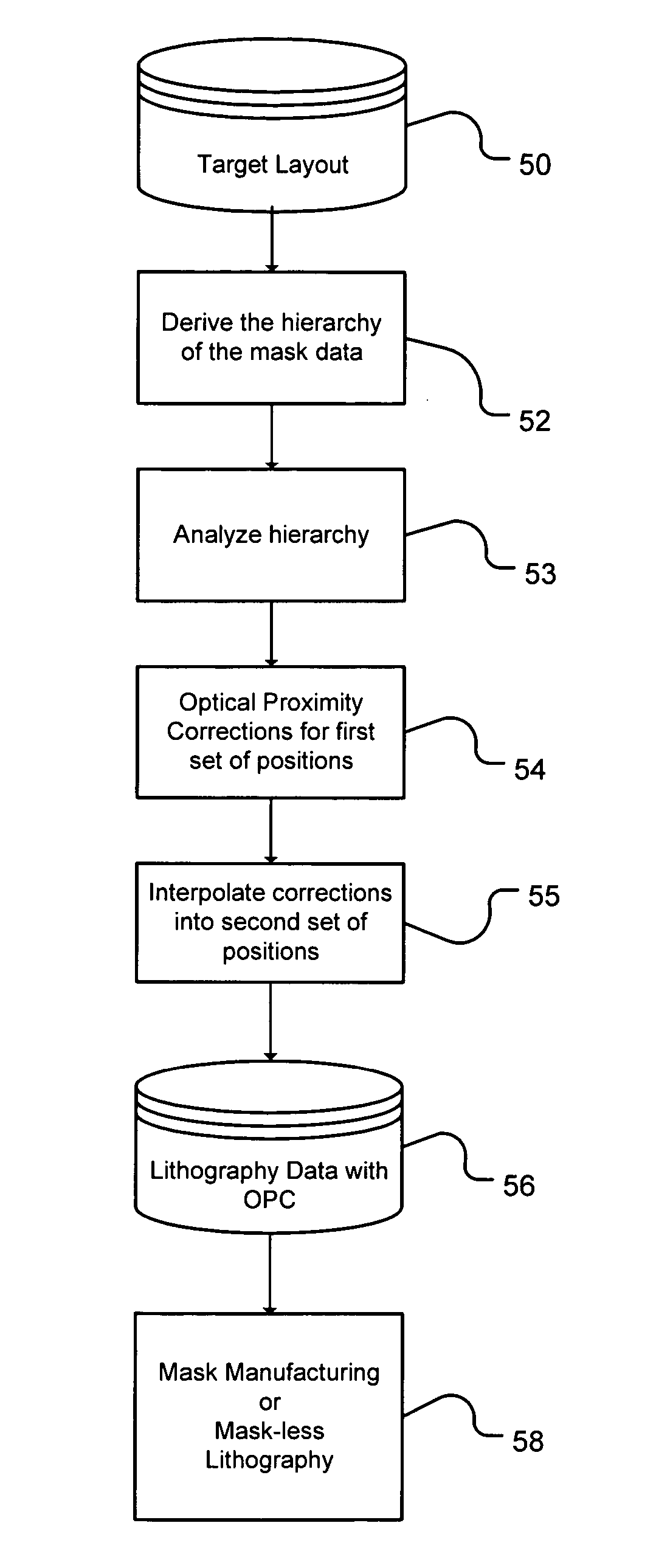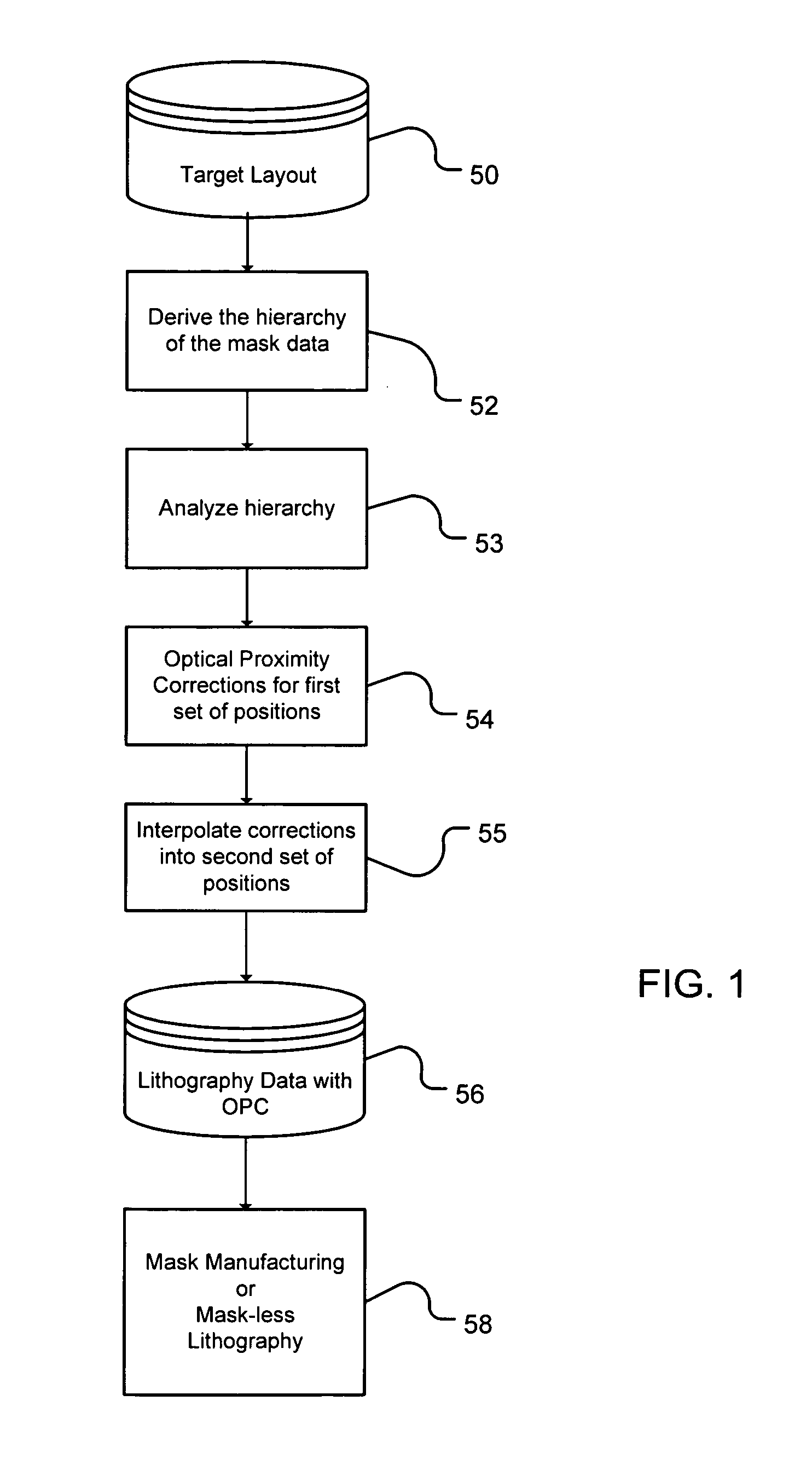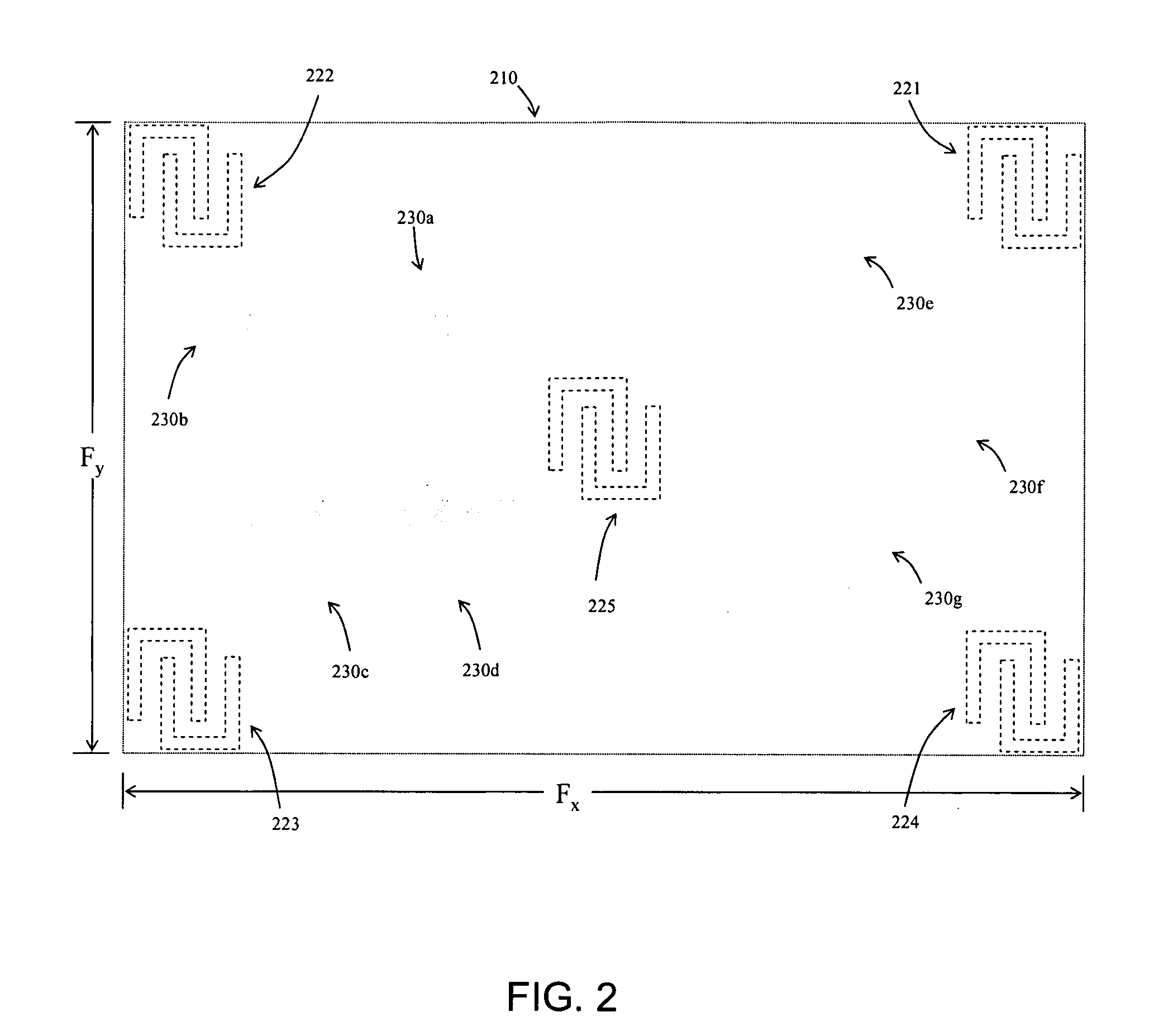Method for correcting position-dependent distortions in patterning of integrated circuits
- Summary
- Abstract
- Description
- Claims
- Application Information
AI Technical Summary
Benefits of technology
Problems solved by technology
Method used
Image
Examples
Embodiment Construction
[0040] OPC Characteristics
[0041] Lens aberrations and the pupil illumination of an imaging system depend on four variables: (xp, yp, xf, yf). The position in the pupil (the Fourier transform aperture) of the projection lens is (xp, yp). The position in the pupil maps to the direction of incidence of a beam on the wafer. The position in the image field is (xf, yf). The four-tuple (xp, yp, xf, yf) uniquely determines the path of a ray through the projection optics.
[0042] Lens aberrations, pupil illumination, and flare depend on these four variables in a nontrivial and non-separable manner. A full description of lens flare requires a function of six variables: (xp, yp, xf, yf) for describing the intended path of the ray and two more variables to describe how the scattered light is distributed to unintended positions in the image field.
[0043] Lens aberrations, pupil illumination, and flare are slowly varying functions of the field coordinates (xf, yf): To observe significant changes ...
PUM
 Login to View More
Login to View More Abstract
Description
Claims
Application Information
 Login to View More
Login to View More - R&D
- Intellectual Property
- Life Sciences
- Materials
- Tech Scout
- Unparalleled Data Quality
- Higher Quality Content
- 60% Fewer Hallucinations
Browse by: Latest US Patents, China's latest patents, Technical Efficacy Thesaurus, Application Domain, Technology Topic, Popular Technical Reports.
© 2025 PatSnap. All rights reserved.Legal|Privacy policy|Modern Slavery Act Transparency Statement|Sitemap|About US| Contact US: help@patsnap.com



